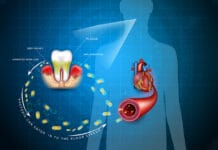Communication between the patient and the clinician is a key component in a successful dental appointment. In order to have successful communication, understanding is essential to bridge the gap of knowledge between clinician and patient. The use of visual aids and reading materials can be useful in providing the patient with the information needed for better understanding. Another form of communication is the use of analogies to explain important dental information in a form to which the patient can relate.
An analogy is “the comparison between two things, typically for the purpose of explanation or clarification”.1 Analogies are important vessels in communication that can bring a better understanding to the patient by using common references that are familiar to the patient. To first implement the use of an analogy in dentistry, it is important to investigate and retrieve some background information on the patient.
During the initial meet-and-greet, asking questions about the patient’s work or hobbies, not only builds a personal connection it also allows the use of the information given to be used in future explanation of treatment or recommendations. Obtaining correct personal information is critical because using a carpentry analogy for a schoolteacher may be as confusing as the initial dental explanation of treatment or recommendation.
Periodontal Disease Analogy
Periodontal disease is a nation-wide concern that affects American adults. However, as age increases, the prevalence of periodontal disease becomes greater. Many Americans are diagnosed with mild to moderate periodontal disease. Statistics show that 3.64% of ages twenty to thirty-four, 1.41% ages twenty-five to forty-nine, and 11.88% ages fifty to sixty-four show at least one site or more of periodontal disease.2 However, severe periodontal disease affects an estimated ten percent of the global population as reported by the World Health Organization in 2017.3
When addressing periodontal disease, analogies are useful tools to educate patients. It is typically explained to the patient that periodontal disease is a bacterial infection of the mouth that causes bleeding, inflammation, and bone loss and may have the potential of causing future tooth loss if untreated, bring this home for most patients. However, sometimes further explanation is needed, and this is where analogies are useful.
To describe periodontal disease as a bacterial infection indicated by bleeding and inflammation using the patient’s hand is a great analogy. Most patients deny the disease with comments such as “My gums always bleed when brushing” or “If flossing causes bleeding, I don’t floss.” As a result, using the following analogy may help in their understanding the disease. The clinician can state: “If every time you washed your hand and it started to bleed or your hand become inflamed, would you be concerned and seek medical attention?” In most instances, the response is “yes” which opens the door for the clinician to further discuss the disease progression.
Using an analogy with the the patient’s occupation or hobbies is useful when describing bone loss ad loss of supporting tooth structures. The clinician can state, for example: “When placing a fence post in the ground, it is important to place the post deep in the ground with dirt placed firmly around the post to allow for stability. However, as the dirt becomes displaced the fence post starts to move, and eventually, when there is no dirt surrounding the fence post, the post fails. This is an example of how the bone and surrounding structures are affected by periodontal disease and, if untreated, the result is tooth loss.”
Radiographic Importance Analogy
Radiographs show the clinician what cannot be seen by the naked eye and are crucial in the diagnosis and standard of care of a patient. However, not all patients are cooperative and question the need for their bodies being exposed to “radiation”. The most common way a clinician tries to persuade the patient of the importance of the x-ray is by explaining that dosage is minimal due to the use of digital x-rays, but sometimes this is even fruitless in gaining the patient’s consent. This is where an analogy is put to good use to help the patient understand the important role x-rays have in diagnostics and preventing any future problems.
A clinician can state: “When you take your car into the shop for maintenance to ensure that it is running properly, do you tell the auto mechanic that he cannot lift the hood of the car and look at what’s inside?” This is what the patient is telling the clinician and doctor to do when not allowing x-rays to be taken.
Sealant Analogy
Sealants are a successful preventive option to tooth decay. The process of the sealant can be difficult for the parent and child patient to understand and may evoke concern or fear. The use of an analogy when explaining sealants to the child patient and parent may alleviate these concerns.
The clinician can state: “The tooth surface has valleys and hills that trap debris. The sealant is a tooth-colored liquid, like fingernail polish, that when painted on the surface fills the valleys, thus creating a smooth surface like an ice rink.”
Although there are many examples of analogies that can be used during a typical dental appointment to explain treatment recommendations or diagnosis, the main idea is to communicate in a way that patients can comprehend the information given to them. Not only will the clinician feel successful at the end of the appointment, it will also prevent the patient from leaving without scheduling the needed treatment because they now understand the importance of the treatment recommendation.
Need CE? Click Here to Check Out the Self-Study CE Courses from Today’s RDH!
Listen to the Today’s RDH Dental Hygiene Podcast Below:
References
- Definition of Analogy. Lexico. Retrieved from: https://www.lexico.com/en/definition/analogy
- Periodontal Disease in Adults (Age 20 to 64). National Institute of Dental and Craniofacial Research. July 2018. Retrieved from: https://www.nidcr.nih.gov/research/data-statistics/periodontal-disease/adults
- Oral Health. World Health Organization. March 20, 2020. Retrieved from https://who.int/news-room/fact-sheets/detail/oral-health












